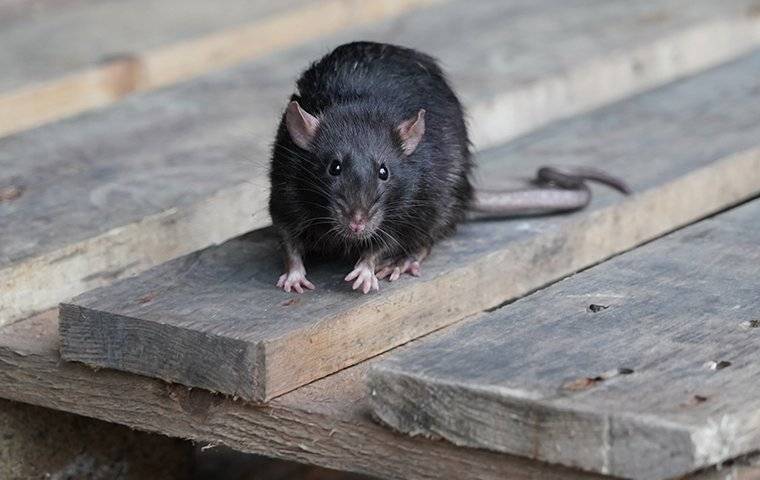
Rodent Control In Tampa: What Every Restaurant Owner Should Know

We don't have to tell you how bad it is to have rodents getting into your Tampa restaurant. You know that signs of an infestation can lead to failed inspections and a closure of business. It is likely that you also know that the weather in Tampa is perfect for rodents all year long. Florida rodents are a constant threat to restaurants and other businesses in our area, and they're hard to keep out. So, what can you do? Today, we'll discuss how and why rodents get into restaurants, a share with you a multi-pronged rodent control strategy that will help you keep your Tampa restaurant rodent-free.
List Of Common Rodents In Tampa
The three most common rodents that get into restaurants are house mice, roof rats, and Norway rats. These are all domestic rodents that are highly defendant on humans for their needs. For this reason, it is difficult to control domestic rodents.
House Mice — These are small rodents with dusty gray fur. The body of a house mouse is 2 ⅓ to 3 ¾ inches with a thin tail that is about the same length.
Roof Rats — These are mid-sized rodents with black fur. The body of a roof rat is 6 to 8 inches with a thick tail that is about the same length.
Norway Rats — These are big rodents with brown fur. The body of a Norway rat is 7 to 9 ½ inches, with a tail that is about the same length.
Why Do Rodents Get In?
Mice and rats have poor eyesight. They must use their other senses to navigate. One sense that they use extensively is their ability to smell. A mouse or rat will catalog smells around them and use the smells as a sort of map. A scent that gets high priority on their list is food. This is one of the key reasons they try to get into restaurants. They smell the food. But it isn't "why" they get in. Mice and rats get in because:
- They can fit through small holes. Small rodents can get through holes the size of a dime and big rodents can get through holes the size of a quarter.
- They can scale some exterior materials in Tampa faster than a mountain climber.
- Rodents can jump several feet horizontally, over a foot vertically, and fall 50 feet without getting hurt.
- A rat can hold its breath for three minutes. This is why some rats find their way into businesses from the culvert system.
- Rodents are equipped with strong teeth, which they habitually use to gnaw on things. A house mouse can gnaw through a 2x4.
Exterior Rodent Prevention
These prevention tips will help you manage attractants, food resources, access paths, and entry points.
- Keep doors closed, so rodents can't run right in.
- Seal any gaps, holes and cracks in your exterior.
- Properly dispose of trash in covered receptacles and keep receptacles away from your exterior if possible.
- Clean and deodorize receptacles if possible.
- Maintain a 2-foot space between your landscape vegetation and your exterior walls.
- Trim tree branches away from your roofline.
- Make sure all vents have working covers.
- Inspect weatherstripping, door sweeps, and screens. If any are damaged, make repairs or replace them.
- Remove bird feeders, or move them well away from your exterior.
- Properly clean all recycling.
- Remove leaf litter from landscaping and blow leaves out from underneath exterior structures.
- Remove ivy from exterior walls. This vegetation can act as a ladder for rodents.
- Address any conditions that allow for standing water near your business.
Interior Rodent Prevention
If a rodent finds its way into your restaurant and explores at night, it is important that it does not find what it is looking for—namely food.
- Protect all interior food sources overnight.
- Keep things clean and sanitized.
- Routinely deep clean spaces around appliances.
- Keep all areas free of clutter.
- Make sure all trash is put out for the evening.
- Repair leaking faucets and other plumbing issues as soon as possible.
How A Pest Management Professional Can Help
Now that you have a list of common rodents, why it is difficult to keep them out, and some helpful prevention tips, it is important to understand the role of a pest control provider. A professional will perform an inspection, evaluate the conditions, and develop a treatment plan. Your technician will do the difficult task of exclusion installation, which protects vulnerable areas. Your technician will deploy, monitor, and maintain rodent control devices, such as tamper-resistant traps. All results will be recorded and provided to you for easy digital access.

Why Choose EcoTech Pest Control Services?
-
Local Experts, World-Class QualityOur locally owned team combines skilled technicians with backgrounds in customer service and pest control. Clean-cut, drug-free, and fully trained, we offer tailored solutions based on local pest knowledge.
-
Excellence, Every TimeOur technicians stay updated on the latest pest control techniques. With personalized attention and ongoing excellence, expect lasting results for your home or business.
-
Personalized Service, Top QualityOur team prioritizes cleanliness and safety, never overbooking to ensure quality. With us, your property gets the care it deserves, every time. Experience peace of mind with EcoTech Pest Control Services.
-
Sustainable Solutions, Reliable ResultsOur methods prioritize the environment and offer long-term results. With free inspections and a satisfaction guarantee, trust us for effective solutions that last.